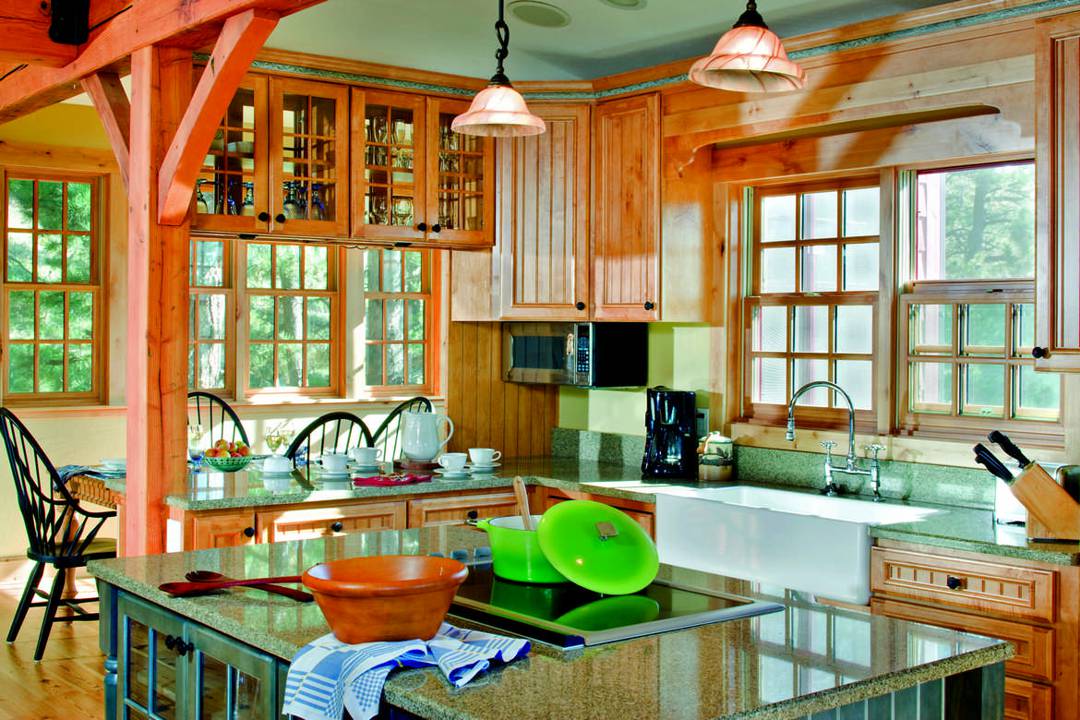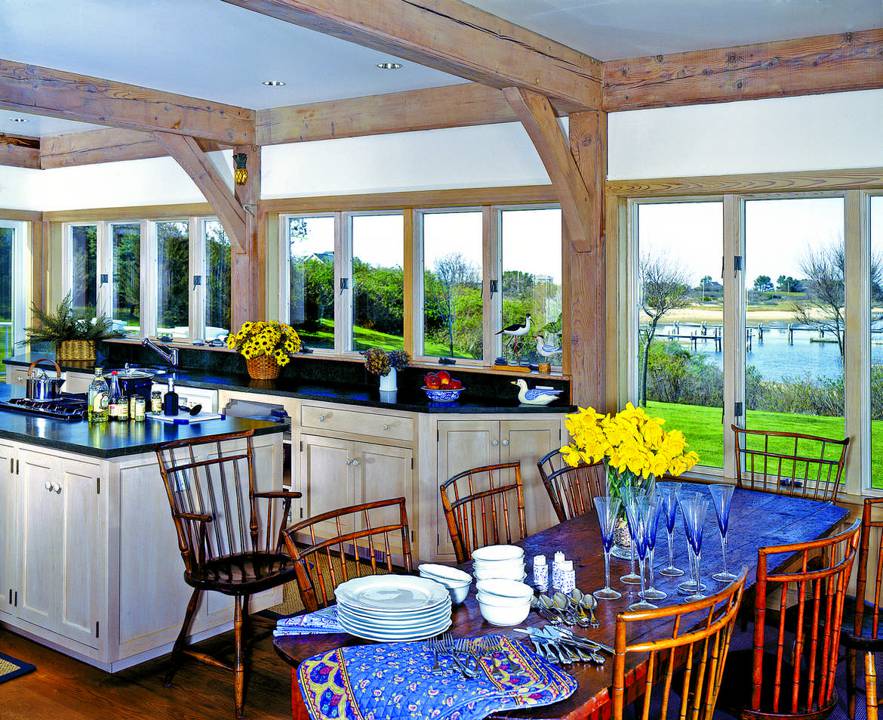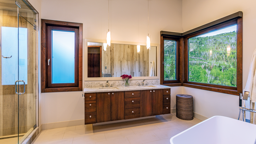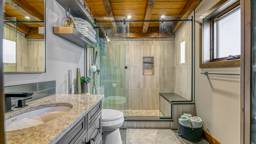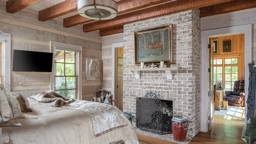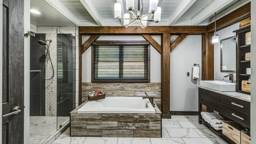Written By Barbara Jacksier
Growing up in a house with a tiny galley kitchen, one of my mother’s oft-repeated mantras was, “No matter where I serve my guests, they always like my kitchen best.” As a kid, I was never sure if Mom was boasting or complaining, but now that I have a home of my own, I know that she was simply stating a fact — whether a kitchen is large or small, it’s the place everyone loves to congregate. Why fight it? Today, most architects and kitchen designers advise homeowners to plan a kitchen that combines both eating and entertaining areas into one comfortable room — especially if you’re trying to save on space.
But attaining an eat-in kitchen that actually works well in your new timber home requires a little bit of forethought and planning. Read on for advice from the kitchen experts, and you’ll soon be cooking (and dining) in style.
Assess Your Needs
Before you meet with a designer or builder, consider the ways in which you use your present kitchen. Think about how and when your family cooks and eats, as well as their daily routines and hobbies.
Is an eat-in kitchen that can host as many diners as a neighborhood bistro useful for the way you really live? Or would you be happier with a space designed for intimate dinners for two? Imagine the things your dream kitchen would make possible. Do you want to be able to accommodate holiday dinners, or are you more concerned about keeping an eye on the kids while you cook?
“Make a chart to record the number of people who dine in the space daily and those who dine there occasionally, and figure out the purpose of the meal, whether it’s for quick snacks, socializing over tea, doing homework or sit-down dining,” recommends designer Lorey Cavanaugh of Kitchen + Bath | Design + Construction in West Hartford, Connecticut, and a member of SEN Design Group, a professional organization of independent kitchen designers.
But it’s also important to think about the future.
“Imagine how your needs might change in five or 10 years,” Cavanaugh adds. If your kids are a few years from college, it might be smart to make the space even smaller than originally planned. On the flipside, if you find your circle is expanding with grandkids, think about whether you’ll want to host large family get-togethers in the near future.
Designing the Space
How big should your kitchen be? The answer depends on both your budget and your lifestyle. But no matter what size you choose, eliminating walls between the living area and kitchen makes for a more social environment. Plus, an open floor plan provides the perfect opportunity to show off your home’s architectural craftsmanship.
With timber framing, post-and-beam or hybrid construction, it’s easy to reinforce the functional and emotional importance of this central space. To personalize your eat-in kitchen, consider handcrafted timbers, specialty woods and vaulted ceilings. Exposed posts and beams let you visually distinguish separate areas without intrusive walls.
If much of your cooking takes place on a grill, think about selecting a plan with a generously sized deck, porch or balcony directly off the kitchen. Use French or sliding glass doors to create easy access to your grilling area.
Include Counter Service
Back indoors, a freestanding island or peninsula will draw family and friends to the cook without creating bottlenecks in the food-prep area. They also provide a place to enjoy breakfast, snacks and casual meals.
If you desire a large island, keep in mind that the National Kitchen and Bath Association recommends a 39-inch walkway between counter seating and walls or cabinets. That way, seated diners will have plenty of space to enjoy their meals without hitting their heads on the cabinets.
Countertop heights can be varied in numerous ways to efficiently provide a dining space in a cozy kitchen. One popular configuration is to design an island or breakfast bar with a food-prep surface on the kitchen side and higher, pub-table-height seating on the other.
Reserve a Dinner Table
While eating counters are useful, in most cases they’re not meant to replace a dining table and chairs. Opt for a generous great room and you can place a long farmhouse table along one side of the cooking area, between the kitchen and living space.
In plans with a separate dining room, a round table tucked into a corner or alcove might be a better fit. If your family usually eats breakfast in shifts, shortening the counter, leaving room for only two barstools, allows for a large dining table that works for both evening meals and holiday feasts.
In a smaller house, reducing counter length can often create enough space for a table. Or better yet, build in your dining area to save space. Built-in banquettes are one option. To eliminate the need for traffic paths on two sides, an L-shape bench can be used. Most floor plans can be modified to accommodate a bump-out or bay window that creates a cozy table alcove. If you can, position your table and chairs to take advantage of a spectacular view rather than the cooking or clean-up area.
When planning the dimensions for an eating nook, allow at least 18 inches and preferably 24 inches of elbowroom for each diner. Big or little, elaborate or simple, just make sure that you love your eat-in kitchen. By assessing your family’s lifestyle and planning for your needs and dreams, you might find that, like your guests, you like your kitchen best, too.
Small-Room Strategies
Take a look at these typical small spaces and ideas to make the most of them.
-
Mudroom: Use a bench in this rear foyer so you can sit down to take off your shoes. Lockers or cubbyholes store coats, briefcases, backpacks, mail and keys.
-
Great Room: Even small great rooms can be dazzling by using skylights or solar tubes to bring in more natural light and draw the eye upward. Save square footage by using a gas hearth, which requires less space than a full masonry fireplace. Use built-ins under windows for storage and seating.
-
Spare Bedroom: Looking to use a spare bedroom as a home office or hobby area is as easy as outfitting it with a Murphy bed that folds up into the wall when not in use. Hidden home office systems, which also close up into the wall, provide the same flexibility.
-
Bathroom: Separate baths for each bedroom is ideal. But the expense and space required can make it impractical. Compartmentalized baths are a welcome solution. But an emerging trend is to provide private separate baths for each bedroom that lead to a common shower and tub area.






